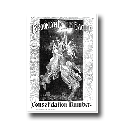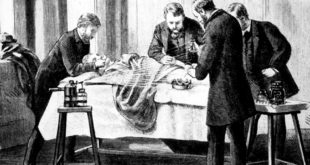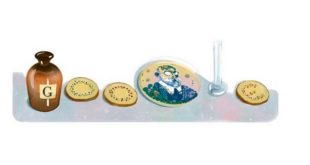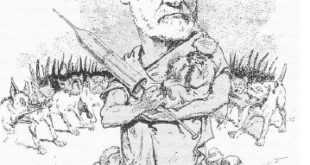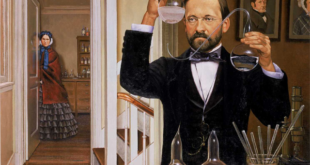Six little children were bitten by a dog in Newark on Wednesday night. There is reason to believe that the dog was suffering from rabies when the wounds were inflicted, from which fact it is fairly inferred that the children are in imminent danger of the awful disease known as hydrophobia. There is no disorder known to the faculty which operates more terribly upon the imagination. The sufferings of victims in the last stages of the disease are, apparently, beyond the power of description; none has ever recovered after this stage to bear testimony upon the subject in any form. The disease has baffled treatment throughout the world up to the present year. But one man of credit has ever affirmed his ability to check the disease and bring about recovery. He is the famous Professor Pasteur, of Paris.
The physician called upon to attend the six victims of the Newark dog applied such remedies as have heretofore been known to prevent the absorption of the poison, but like a good and true disciple he felt bound to give his little patients the benefit of the best advice in the world. He proposed the bold measure of sending them to Paris for treatment by Professor Pasteur, and cabled that distinguished savant for permission. Word has returned to send them on without delay. Subscriptions from people have poured in rapidly. They will be equipped, transported, treated and, in case of good results, returned at no expense to their parents, and will be accompanied by a distinguished New York professor, who will watch them on the voyage over and, perhaps, bring back with him the precious secret which the perseverance and wisdom of the great microbiologist has wrested from nature.
Hydrophobia has long evaded scientific analysis. The terrors of the disease have made it familiar to even the least educated minds, but his speculations of millions of people have hitherto failed to determine its character with sufficient distinctness for treatment. So evasive is it that many enlightened practitioners have declared it to be a disease of the imagination produced by fear. Others have insisted that it is but a form of tetanus or lockjaw. Pasteur’s discovery, if indeed, as we are here assuming, it is demonstrated beyond a question, brings it into the category of germ diseases to which belong the eruptive fevers. A specific bacillus, he holds, circulating in the saliva of the rabid dog, is implanted in the tissue of the bitten victim. Here it lies, for varying periods, incubating. At length it is taken up by the circulation, in which it rapidly reproduces itself, until the blood swarms with it. Its specific action is upon the nerve pulp to which it attaches itself. A precisely similar process goes on in diphtheria. Photographs have been obtained of the diphtheria bacillus in actual progress of reproduction by Dr. John G. Johnson, in which the extension of the bacillus and its rapid fracture into new bacillus is most perfectly delineated. So minute are the germs and so rapid the process that instantaneous photography and the most delicate microscopic adjustment are required to detect and fix the picture. The new theory of treatment of diphtheria and similar diseases developed by these discoveries is germicidal. Powerful antiseptics like corrosive sublimate are administered in minute doses for the destruction of the germ, and medical practice now regards diphtheria, once the most dreaded of scourges, as less dangerous than measles.
To Professor Pasteur belongs the credit of the discovery of the bacillic origin of eruptive fevers, and of the yet more striking application of inoculation of the cultivated germ as a preventive of the development of the more virulent poison. The smallpox virus cultivated in the cow assumes a milder characteristic, and when applied to the human being guarantees protection in a varying degree against smallpox. So, argued Pasteur, the hydrophobia germ, which affects man and dog in different ways, may be possibly cultivated in such a fashion as to give immunity to animals inoculated with it form the bites of rabid dogs. This inductive proposition has been verified over again by experiment. Next addressing himself to the cure of the disease, he has developed a form of treatment. He has already treated human beings whose infection by bites is beyond doubt within a millionth chance of error, and they have escaped the disease. His critics still cling to the possibility that the patients were not actually infected, and base their incredulity upon the well known fact that hydrophobia does not always follow the bite of a mad dog, and also that the period of incubation may extend over years. But the application of either assumption to the many cases treated by Professor Pasteur would involve a series of coincidences so surprising and so completely at variance with human experience as to render the other alternative, namely, that his theorem is unassailable, that, in a word, he has cured his patients, the only reasonable explanation.
 Pasteur Brewing Louis Pasteur – Science, Health, and Brewing
Pasteur Brewing Louis Pasteur – Science, Health, and Brewing 